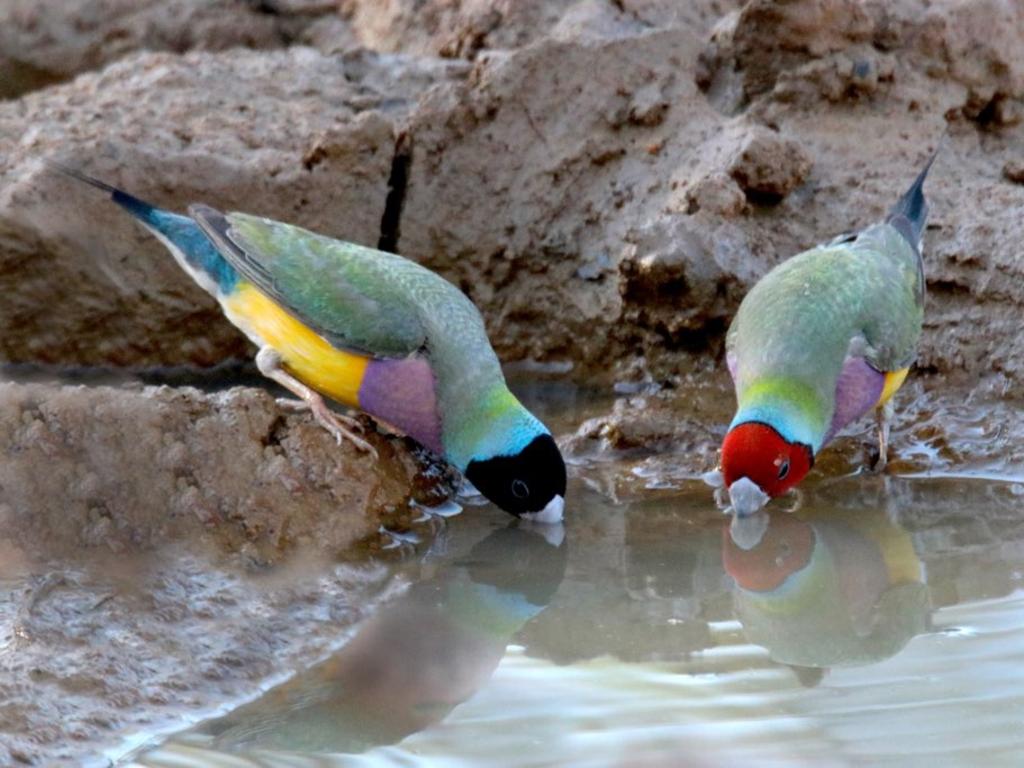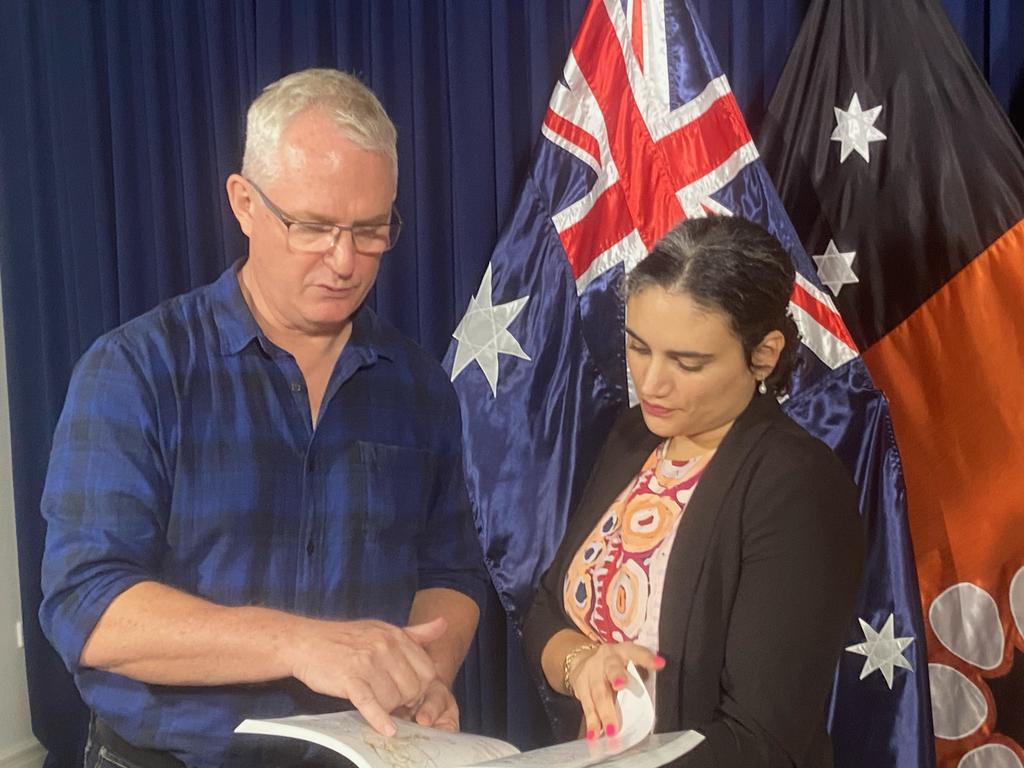No formal moves have been made to reclassify the Gouldian finch
The ball is in the NT government’s court if it wants to reclassify the Gouldian finch from the endangered list. Read how its population is bouncing back.
The Commonwealth government has moved to clarify the threatened species status of the Gouldian finch amid reports of a surge in numbers in the NT.
According to the Department of Climate Change, Energy, the Environment and Water, the Gouldian finch is in the endangered category based on historical population declines.
The colourful bird is found in the NT, Queensland and WA and until recently was believed to have been a threatened species.
Then the arrival of Gouldian finches at Lee Point last year prompted the Commonwealth to order a halt on a multimillion-dollar Defence Housing Authority project.
And the NT government identified larger than expected populations during compilation of the Regional Report into the potential environmental impacts of fracking.
The report surveyed more than 86,000 square kilometres of the Territory between Mataranka, Elliott, Top Springs and Cape Crawford and identified larger than expected numbers of Gouldian finches.
Dr Alaric Fisher, executive director flora and fauna with the NT’s Department of Environment said the regional study showed Gouldian finches were more common than expected.
“It was definitely endangered back in the ‘90s but that has been a gradual improvement in its population subsequently over decades so it’s definitely time to re-look at that, but it’s a complex process that involves input of a lot of data from the three jurisdictions and the Commonwealth.”
A Commonwealth government spokesman told this publication amendments to the threatened species list under the Environment Protection and Biodiversity Conservation Act were made by the Federal Minister based on advice from the independent Threatened Species Scientific Committee.
“The Gouldian finch has not been prioritised for listing reassessment of the conservation status of the Gouldian finch under the EPBC Act,” he said.
He said no formal approach had been made to the Australian government to undertake reassessment of the finch’s conservation status.
The spokesman said a national recovery plan for the Gouldian finch and a “conservation advice” were in force under the EPBC Act to support the species’ protection and recovery.
“To delist a species, the minister must be satisfied that the species is no longer eligible for listing and that maintenance of the listing will not contribute to the survival of the species,” he said.
“Together with all other states and territories, the NT government works with the Australian government to identify, prioritise, assess and amend the listing of nationally threatened species.”
Gouldian finch numbers rebound from the dark days of the 1990s
The colourful Gouldian finch appears to be making a comeback.
A recent environmental study of a large tract of the Northern Territory found larger Gouldian finch populations than expected.
And there is a call for the bird’s “near threatened” conservation status to be reviewed on the back of larger than expected numbers.
The arrival of Gouldian finch at Lee Point last year caused the Commonwealth government to pause a multimillion-dollar Defence housing project.

And far from being threatened – or even near threatened – Territory boffins say the Gouldian finch appears to be on the comeback trail and it’s numbers in the NT have increased.
The Regional Report commissioned to provide environmental benchmarks for proposed onshore gas developments at Beetaloo Sub-basin uncovered the larger populations over 86,400 square kilometres between Mataranka in the north and Elliott in the south to Top Springs in the east and Cape Crawford in the west.
Dr Alaric Fisher, who headed the strategic regional environmental and baseline assessment study, said the finch is “widely occurring” in Queensland, WA and the NT and that a review of its classification would be handled by the Commonwealth.
“The states have an agreement between themselves and the Commonwealth that they will stop listing things with different status in different states so there’s now a process to reach agreement about the national status of all species,” Dr Fisher said.

“The Gouldian finch is a widely occurring species so ultimately it will be the Commonwealth who runs that reassessment process.
“We have quite a lot of new data from the SREBA study that has shown the Gouldian to be more common in that region than we would have expected and it adds to a very large amount of data over the last 20 or more years that the species is recovering.
“It was definitely endangered back in the ‘90s but that has been a gradual improvement in its population subsequently over decades so it’s definitely time to re-look at that, but it’s a complex process that involves input of a lot of data from the three jurisdictions and the Commonwealth.”
Environment Minister Lauren Moss said the priority for government is getting the balance right between sustainability and development.
“It’s really important we get that balance right, that we are protecting endangered species and that we’re sustainably developing and investing in our regions and we do keep a really good eye on that.
“Obviously the classification of our flora and fauna isn’t decided on where people want to develop, it’s decided on the populations and habitat and a whole range of other characteristics, but we keep an eye on it all the time.”
The Commonwealth’s threatened species commissioner has been contacted.





